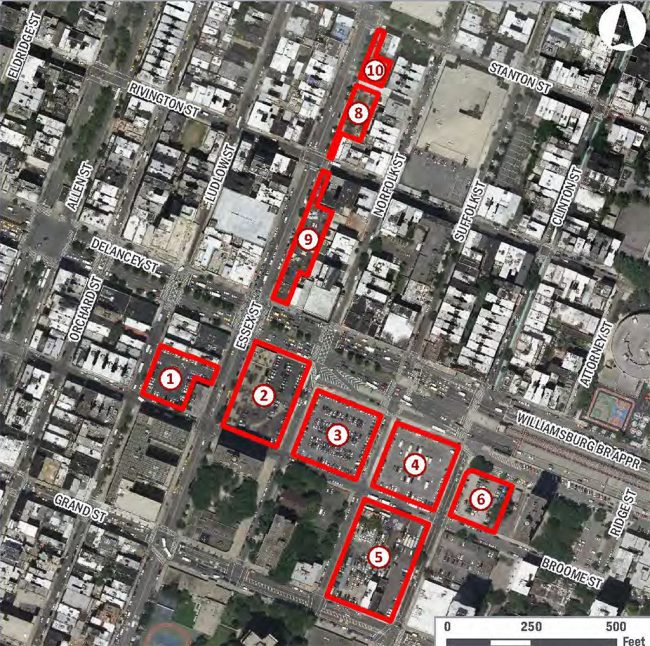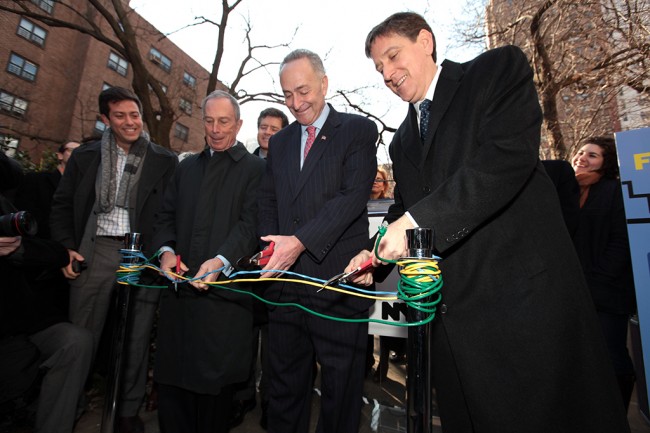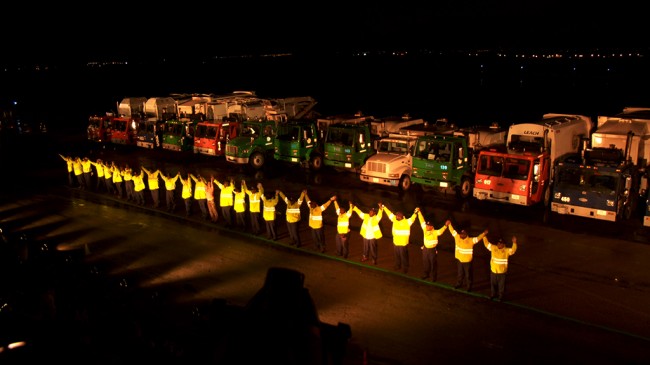
We are celebrating 15 years — and counting — of stories that are deeply researched and deeply felt, that build a historical record of what the city has been.
We are celebrating 15 years — and counting — of stories that are deeply researched and deeply felt, that build a historical record of what the city has been.

The Seward Park Urban Renewal Area includes nine city-owned parcels near the intersection of Delancey and Essex Streets in the Lower East Side | Image via the NYC Economic Development Corporation
SEWARD PARK RFP RELEASED
This past Wednesday, 45 years after being cleared in the name of urban renewal, six acres of the Lower East Side moved a step closer to redevelopment. The Economic Development Corporation (EDC) and the Department of Housing Preservation and Development (HPD) have issued a request for proposals (RFP) to develop the nine parcels that make-up the Seward Park Urban Renewal Area (SPURA). The RFP calls for 1,000 residential units, 50% of which must be affordable, and a “dynamic mix of commercial properties,” representing the creation of approximately 1.65 million square feet of development on what stands as the largest piece of underdeveloped public land in Manhattan below 96th Street.
CLEARER PARKING SIGNS
The New York City Department of Transportation (DOT) unveiled new, simplified parking street signs on Monday. Created by Pentagram Design, the new signs use a new font and standardized colors, eliminate abbreviations, and reduce the number of words and characters used, in an effort to make parking rules more easily understood. Despite the notable improvement, at least one designer noted the lost opportunity to push the envelope on wayfinding.
POTHOLES’ WORST ENEMY
A week ago, Storyboard, an editorial project from Tumblr, posted about a day spent with DOT’s street maintenance team. Nicknamed the “pothole gang,” this team’s task is to repair the city’s tens of thousands of potholes. They start each morning by checking up on the Daily Pothole spreadsheet, which is fed by citizen 311 reports. The scale of their charge is massive; the team reports that on January 7th they repaired 1,325 ditches and divots.

Ceremony to launch free neighborhood WiFi | Image via NYC Mayor’s Office
FREE WI-FI IN CHELSEA
Thanks to a partnership between the Chelsea Improvement District and Google, parts of Chelsea are now served by the largest public wi-fi network in New York City. The area, extending from 8th Avenue to the West Side Highway and 19th Street to Gansevoort Street, includes Google’s New York headquarters, part of the High Line, the Robert Fulton Houses, and a NYCHA complex. Google Chief Information Officer Ben Fried explained, “This is about giving the internet, which is what gave us life, back to the community.”
SANDY
On Wednesday, Governor Cuomo’s NYS 2100 commission, charged with recommending changes to New York’s infrastructure following the failures exposed by Sandy, released a draft of its report endorsing investment in soft infrastructure (eg. oyster beds, dunes, and wetlands), improvements in insurance coverage, and further inquiry into the potential of large-scale projects such as a moveable sea gate across the Verrazano Narrows. Regarding mass transit, the commission recommended a robust Bus Rapid Transit (BRT) system, rapid implementation of communications-based train control, and mechanisms like inflatable plugs and waterproof roll-down doors to keep water out of the subways.
Cuomo trumpeted many of the report’s recommendations in his 2013 State of the State address (and accompanying book). Though Sandy- and Newtown-inspired reforms took center stage in the annual address, the governor also proposed tighter greenhouse gas standards, solar jobs programs, an increase in the state minimum wage, a $1 billion affordable housing initiative, equal pay for equal work legislation, and expanded casino gambling upstate.
Last week, Congress passed legislation providing $9.7 billion in funds to cover insurance claims stemming from the storm, a small portion of the estimated $80 billion needed to help the region recover. After drawing strong criticism from across areas affected by Sandy for delaying Congress’ action, including from many fellow Republicans, House Speaker John Boehner has promised to bring an additional $51 billion aid measure to a vote later this month.
EVENTS AND THINGS TO DO
CHARTING THE ROAD TO RESILIENCE
The Municipal Art Society continues the conversation on how to build a more livable and resilient city post-Sandy with a day-long conference of plenary sessions and workshops on Saturday, January 12th. The third event in a larger series, topics will link to community capacity and grassroots response. The event is free, but registration is required.
BOOKCOURT SANDY BENEFIT
A segment of Brooklyn’s illustrious author community will be participating in an all-day series of readings tomorrow at BookCourt in Cobble Hill. The bookstore will donate 15% of the day’s proceeds to Sandy relief efforts. Readings begin at 10:30am.

The sanitation workers and choreographer behind Trash Dance take a bow | Image via Trash Dance
TRASH DANCE
Next Wednesday, New America NYC will host a screening of Trash Dance. The documentary follows choreographer Allison Orr as she joins city sanitation workers on their daily routes, learns about their lives, and eventually convinces some to collaborate on an extraordinary dance performance on an abandoned airport runway. A conversation on the arts moderated by Edward Hirsch and featuring Trash Dance Director Andrew Garrison, Nasha Thomas-Schmitt, and Paul Booth will follow.
SOIL IS KEY TO QUALITY FOOD WORKSHOP
Nourishing Cities is a worker cooperative focused on edible landscapes, bioremediation, and green infrastructure. Partnering with the Traditional Nutrition Guild, they will hold a two-part series on January 19th and March 30th that teaches principles and techniques for producing rich soil and nutrient-dense food to help increase the food productivity of urban environments.
LOWERING THE COST OF HOUSING COMPETITION
Architects, developers, and policy professionals looking to voice innovative ideas for the future of affordable housing, take note: Enterprise Community Partners, Deutsche Bank, and the UPSTATE program of the Syracuse School of Architecture are seeking submissions for the Lowering the Cost of Housing Competition. The competition seeks to provide a new model for conceiving, siting, financing, building and sustaining, affordable housing through site-specific design proposals. Submissions are due Tuesday, January 15th. For more on creative housing solutions, look back at Making Room, the 2011 research, design and advocacy project launched by the Architectural League and the Citizens Housing and Planning Council to shape New York’s housing stock to address the changing needs of how we live now, which is the subject of an upcoming exhibition at the Museum of the City of New York.
WHEELWRIGHT PRIZE
The Harvard Graduate School of Design is accepting applications through February 28th for its annual Wheelwright Prize, a $100,000 traveling fellowship for early-career architects proposing exceptional itineraries for research and discovery.
The Roundup keeps you up to date with topics we’ve featured and other things we think are worth knowing about.
The views expressed here are those of the authors only and do not reflect the position of The Architectural League of New York.